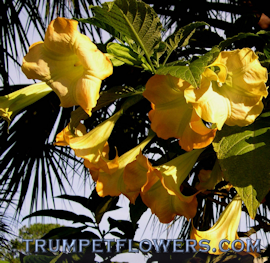Caresheet for Firebellied Toad
These comical, rather small toads resemble frogs rather than their true family lineage, at least at first glance. They have shiny, bright green to greenish-gray skin on their backs with black or dark brown spots. They lack external eardrums, and yet males do call in breeding season. Their eyes have triangular pupils, unusual among anurans. Like most toads, their skin is bumpy. But like frogs, the skin has a wet appearance and stays moister than most toads, giving rise to the misnomer among novices who may then assume it IS a frog instead of a toad!Bombinas occur in Europe east to the Ukraine, into western Russia, Turkey, eastern Russia and China, Korea, Vietnam, Borneo and the Phillipines.
 When fire-bellied toads feel threatened, they flip over and arch
their backs (This is called the "unken reflex"). Their
bright colors are to warn predators that they are in fact poisonous. Keep no
other species with those of the family bombina !
When fire-bellied toads feel threatened, they flip over and arch
their backs (This is called the "unken reflex"). Their
bright colors are to warn predators that they are in fact poisonous. Keep no
other species with those of the family bombina !
These diurnal toads prefer slow moving waters, including ponds, swampy areas and marshes. The species Barbourula are more mountainous, where you will find them near mountain streams and shallow pools, hiding among the rocks at banks' edge. Barbourula are also more camouflaged and will not engage in the unken reflex as will the other fire-bellies. They also lead a much more secretive lifestyle.
 Bombina bombina the red-bellied toad, breed from May to September, during which
time the males will call from under water or from a floating position. They will lay
up to 300 eggs . After approx. 8 weeks, the eggs will hatch, and the tadpoles metamorphose
before the autumn chill begins. They become active again when temperatures rise above
60°. They can live up to 12 years.
Bombina bombina the red-bellied toad, breed from May to September, during which
time the males will call from under water or from a floating position. They will lay
up to 300 eggs . After approx. 8 weeks, the eggs will hatch, and the tadpoles metamorphose
before the autumn chill begins. They become active again when temperatures rise above
60°. They can live up to 12 years.
Bombina variegata the yellow-bellied toad, occurs in central and southern Europe. Also southeast to the Carpathian mountains of the Ukraine. These toads prefer to inhabit forests, grasslands and glades where watersources are nearby. They begin hibernation in October and awake again sometime between March and May, depending upon the weather.
Their breeding habits are similar to the others in this family, but egg clutches are smaller, usually only 40 to 100 eggs each.
Setup
In captivity, this toad needs a wider than taller setup, as he is terrestrial. They also must be provided with a good sized pond or large cascading waterfall with wide base, each with a sponge filter to keep the water clean, as these toads love hopping from the substrate back into the pools to soak and bask.
Temperatures should be kept between 78° and 84° in summer and spring, then ease off in fall and winter to 70° to 72°. Drop temps by 6% evenings. Bombinas are rather ravenous, so feed them 6 to 8 medium sized insects every other night, or 4 every day; your choice. Remember, in nature this toad comes out to eat every day, and is not fed according to our schedule. Drop off the amount of food in winter temps as well (Anurans do not digest food as quickly when temps are lower). Keep hygrometer moderate in winter, about 55%, and spring and summer can rise to 80%.
Plant their tank lushly with silks or real plants, and give them plastic caves to hide in. If you've provided them a pool instead of waterfall, be sure to add some slate-stone to it to ensure they can easily crawl in and out.
Thoroughly clean the vivarium once a month, removing any poop and rinsing off the substrate (I prefer Scotts ground peat, available at Home Depot) well to remove ammonia. Remove all water from a waterfall with sponge filter once a week and rinse down the water container in fresh treated water before refilling. Pools should be cleaned daily and treated water replaced.
Lighting should include two strip fluorescents of daylight quality. Use a screen top. Keep them away from drafty areas in the room. If you're keeping live plants, you can add a plant bulb.
Feed them dusted crickets, grubs, red-worms, maggots and slugs.
A note of interest about these toads are that, if bred in captivity, the froglets will not gain the vibrant colorations of the adults without the addition of parrot-feather coloration powders dusted onto their insects!
Do not handle this anuran unless absolutely necessary, and then use Proper procedures.
Further Onsite Help
-
Basic Frogcare (choosing healthy frogs, species mixing, feeding, etc.)
Vivariums (to establish and maintain, lighting, substrate ideas, etc.)
Quarantine (keeping vivarium disease-free, how to set up quarantine tank)
Water 101 (How to establish & maintain high quality water)
Raising Insects (Info about raising your own insects, including grubs)
Frog Breeding (temperate style setup information)



